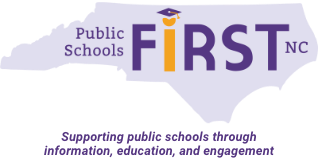On May 17, 1954 the U.S. Supreme Court ruled in the landmark Brown v. Board of Education that state-sanctioned segregation of public schools was a violation of the 14th Amendment and was therefore unconstitutional.
While the ruling did catalyze massive changes throughout the nation, including helping to propel the civil rights movement, the full potential of school integration was never fully realized. After school desegregation reached a high point in the 1980s, gains were lost. Our schools are rapidly resegregating and are now nearing late 1960s levels of segregation.
In North Carolina, reaction against school segregation was swift and strong. The Pearsall Plan and later legislation created the state’s first voucher program. It allowed families to receive an “education expense grant” for private school tuition for children assigned to integrated schools.
The education expense grants were declared unconstitutional in the late 1960s, but the provisions in the Pearsall Plan slowed desegregation efforts across the state. Private schools called “segregation academies” opened in the 1960s and 1970s with the primary purpose of enrolling students whose families wanted to avoid segregated schools.
in 1971, Julius Chambers, a civil rights lawyer from Charlotte, successfully argued the landmark case Swann v. Charlotte-Mecklenburg Board of Education before the U.S. Supreme Court. The ruling granted federal courts the power to order busing to force racial integration. The case ended government-sanctioned segregation in Southern schools.
Research has shown tremendous benefits of desegregation for students. School desegregation led to dramatic increases in graduation rates, college going, adult health status, and adult income and economic power for Black students and Latino students. It also resulted in increases in years of schooling sufficient to close the Black-White educational attainment gap.
What’s more, ALL students benefited. Initially feared academic declines never materialized, and students experienced the academic, social, critical thinking and problem-solving benefits of learning in a diverse setting.
But resistance to desegregation persisted. A 2002 ruling in Belk v Charlotte-Mecklenburg Board of Education (filed by a white parent to end the use of busing in CMS to achieve racial diversity), the federal 4th Circuit Court of Appeals essentially dissolved the Swann desegregation order.
By 2022, nearly half of CMS schools were more than 90% students of color, compared to 1% in 1989 and 16% in 2002. A rise in charter school enrollment has further fueled resegregation, as these schools tend to be much more racially isolated than traditional public schools.
In 2014, North Carolina’s newest taxpayer-funded private school tuition voucher program launched. Unlike the voucher program of the 1950s, segregation is not the stated purpose of the latest program. However, data reveals that the program now primarily serves white students (73%).
Reporting in 2024 identified 39 private schools that opened as segregation academies in North Carolina and are still operating. Many of these schools have received millions in taxpayer funds. Data from a 2021-22 federal survey (the most recent data available) reveals that some still have white student populations far greater than in the local public schools.
For example, the student population at Lawrence Academy in Bertie County was 97% white in 2021-22, while the student population of Bertie County Schools was just 10% white (data from the NC Statistical Profile). This highly segregated private school has received $2,363,213 in taxpayer-funded tuition from the state.
Northeast Academy in Northampton, Pungo Christian Academy in Beaufort, and Wake Christian Academy in Wake all follow a similar pattern. They serve a strikingly disproportionate number of white students as compared to their local school district. These “segregation academies” have received millions in tuition payments from the state (i.e., taxpayers).
Expansion of the taxpayer-funded private school voucher program (Opportunity Scholarships) to fund all families, regardless of income or prior public school enrollment, has worsened the segregation caused by charter schools.
Together, charter schools and vouchers have returned North Carolina to an era of state-funded segregation despite the promise and hope of Brown v. Board of Education.

